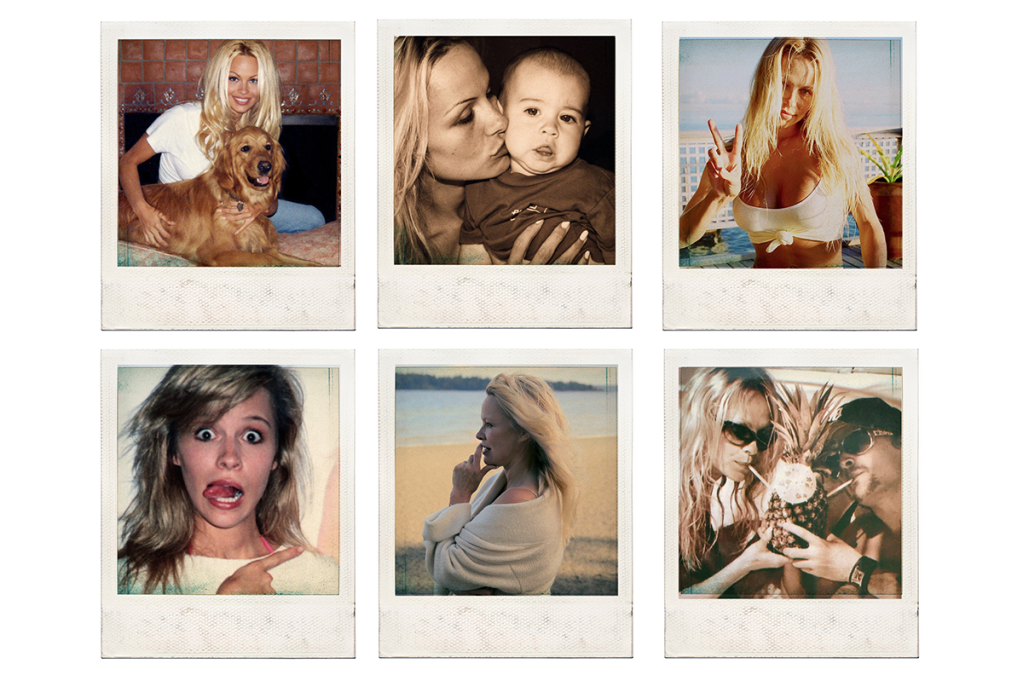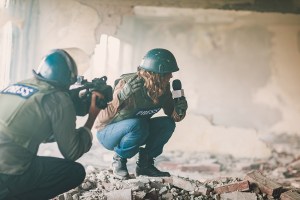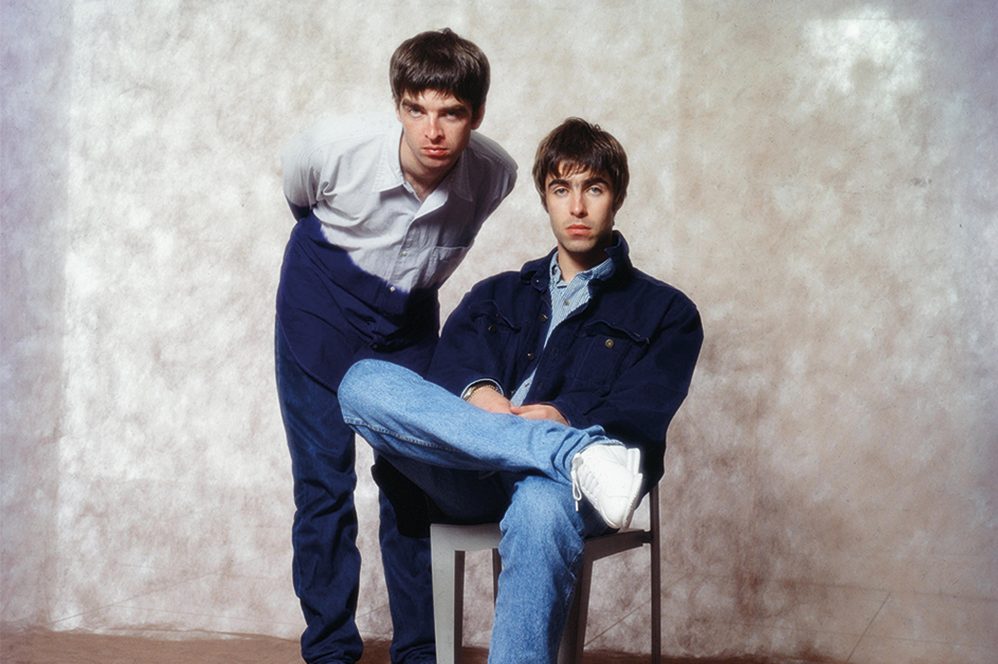Pamela Anderson cites Joseph Campbell’s The Hero with a Thousand Faces as the template for her memoir, Love, Pamela. The pop literary critic’s analysis of mythical heroes famously inspired George Lucas’s Star Wars. As Lucas deconstructs the heroes of western literature, Anderson dismantles the banal Madonna/whore template that has dominated tabloid coverage of her life. Unfortunately, Anderson supplants one boring motif with an even more tedious one: the archetype of the celebutante victim.
Anderson and her publicity team — the memoir is as much a press release as a book — have positioned Love, Pamela and its accompanying Netflix documentary Pamela, a Love Story as rebukes to the victimization of Hulu streaming Pam & Tommy, an unauthorized drama about the illegal release of Anderson and her ex-husband Tommy Lee’s sex tape. “She’ll never, never watch this,” a source close to Anderson told Entertainment Weekly when the series aired last year. “Not even years from now. Not even the trailer.” So, Anderson claims, she is finally telling her own story for the first time, even though she previously published the memoirs Pamdemonium and Raw, as well as Star, a 2004 roman à clef about “what really happens when A-list meets D-cup, when small-town girl gets all glittered up and becomes a goddess.”
Love, Pamela posits the persuasive thesis that everyone from tabloids to mainstream news took advantage of the Playboy Playmate-turned-Baywatch actress. Anderson sets out to dispute the myths and depicts herself as a heroine fighting against the odds. Her hero’s journey begins on quiet Vancouver Island, where she flees a difficult childhood, running to La La Land and through the gates of the Playboy Mansion. Once in Hollywood, Anderson battles one monster after another: a stolen sex tape, rocky marriages to everyone from Mötley Crüe drummer Tommy Lee to gambler/Paris Hilton-playmate Rick Salomon, and most of all, the ever-snapping paparazzi that falsely capture her as a dumb blonde. She overcomes it all, triumphing as the mother of two supposedly genius sons. (Anderson’s son Dylan’s genius: investing in cryptocurrencies and the blockchain instead of the stock market.)
As an outline, it’s a stellar story; no wonder streamers wanted to script her life. Yet Anderson is too lost in her victimhood and dispelling the dumb blonde persona to tell a compelling tale. She dedicates page after page to Lee and her father punching paparazzi and settling with cameramen out of court. (“Another $25,000,” the author writes.) Like a spurned lover, she shouts out CNN as a media outlet that did her dirty. “My mom was watching CNN and thought, ‘That poor girl.’ Then she realized it was me,” she writes.
Here, her prose is flat, and it feels like Anderson — consciously or otherwise — is attempting to have her Framing Britney moment. That Hulu documentary so successfully repositioned Britney Spears as a victim of the press that it’s birthed its own genre of documentaries and books. First, Prince Harry’s Spare. Now, Anderson’s Love, Pamela. (Next up: Paris Hilton’s Paris: The Memoir promises to rehabilitate the reality star as “Founder. Entrepreneur. Pop Culture Maker. Innovator. Survivor. Activist. Daughter. Sister. Wife. Mom.”) During the victim chapters, Anderson’s writing only comes alive in the deposition room, where she faces off against the distributor of her unauthorized sex tape. “One lawyer was literally foaming at the mouth, white stuff collected in the corners,” Anderson writes. She grows so angry, she decides to drop her legal case against the smut peddler.
But that electric writing is rare. Anderson is too focused on rebranding. She scatters abstract poems throughout the book, mistaking lines like “impossible, forbidden, lost” as profound. At one point, she credits Ava Gardner’s performance in the film adaptation of Tennessee Williams’s The Night of the Iguana as an inspiration for her life, seemingly unaware that Tennessee Williams’s women are not role models. Elsewhere, she brags how Jane Fonda, Ursula Andress and the now late Raquel Welch relate to her. Brigitte Bardot even calls Anderson a “daughter,” but a sentence later, Anderson admits they’ve never met.
The weirdest, most eye-rolling moments occur in the bedroom, where Anderson — North America’s most famous sexpot — stays up with a Plato tome beside her bed or scrolling through the Criterion Channel. Anderson offers little insight into Fellini, other than that she loves his work, but her prose shines when she comes across Fosse/Verdon. The FX series recounts the relationship between film/theater choreographer/director Bob Fosse and his dancing muse Gwen Verdon. “I searched for dances by Fosse and Verdon and drank it all in,” Anderson writes. “I was dousing myself, annihilating reality.” She goes on to recount how Barry Weissler, who produced the revival of the Fosse musical Chicago, cast Anderson as Roxie Hart, Verdon’s character who leverages murdering her husband into fame. “[Anderson] IS Roxie Hart,” the producer says. Anderson doesn’t disagree.
Like Hart, Anderson knows how to manipulate her fame and body, because those are the tools in her art kit. Although Anderson sounds like a try-hard when discussing Werner Herzog or Jim Jarmusch, she comes across like a natural genius when analyzing her decisions on photoshoots for Playboy and seminal pop photographer David LaChapelle. Take how she details how to pose perfectly for the Hasselblad film camera:
Each shot was very deliberate. You had to move slowly, be put in a position and hold it, looking relaxed and sensual without breathing. I learned about body parts in a whole new way. “The return of the breast” meant that part under your arm, where your breasts meet your side/back. And it was important to point your toes.
In a single paragraph, Anderson breaks down the complicated thought process that goes into posing for an iconic photo. Posing is not just a learned skill. In another section on modeling, Anderson describes the behind-the-scenes of her iconic collaborations with LaChapelle. “I’m not sure why I felt the need to swing around as fast as I could — the extensions were flying out of my hair,” she writes. “In the end, I just fell to the floor and rolled around, feeling the burn through my legs, laughing and crying out loud.” Like all great artists, Anderson the model combines discipline with instinct. Ironically, Anderson’s writing turns poetic and insightful in these scenes on model shoots and in Hollywood. “I love the Beverly Hills Hotel,” she writes. “All good things start there.” Elsewhere she suggests, “Everyone alive is a mess.”
Anderson is poetic when she’s not trying. In a few brief pages, she captures her fascinating brief marriage to Salomon. When her gambling friends lose a bet to Salomon, he jokes he’ll erase the debt if Anderson marries him. Anderson then walks into a hotel room, lies on the ground, and lifts her dress and sweater over her head. Salomon lies on top of her, picks the fabric off her face, and, Anderson writes, “looked deep into my eyes, and kissed me hard.” They make love, then marry. A few months later, Anderson’s housekeeper finds Salomon’s crack pipe in a Christmas tree, so they divorce.
It’s a short sequence, but like a great poem, it tells a whole story in a series of few brief images. Anderson’s prose soars when she’s brief. While she’s renovating a Malibu palace, Anderson moves into a trailer park, where neighborhood kids jump her fence and hang out with her. More tragically, when a Simpsons producer grows ill, Anderson blows up her “famous balloon animals” for him and ties them into animals missing limbs.
There’s a circularity to some scenes. Early on, Anderson describes taking her young children to the Playboy Mansion for an Easter egg hunt, where her son grows disgusted when he learns Hugh Hefner takes photos of nude women for a living. Years later, when her son Brandon — now a young adult — moves to London, she signs him up for a Playboy Club membership and asks Playmates to watch out for him. Anderson doesn’t belabor the full-circle moment, but she doesn’t need to. Great writing lays it out without shouting its meaning at you.
Unfortunately, most of Love, Pamela fails in its quest for victimhood and intellectualism. It’s a tragedy that Anderson gets lost in building “Pamela Anderson,” the intellectual/victim archetype, instead of Pamela Anderson, the person. When Anderson is breaking down her manipulation of the camera and offering her raw analysis of the Hollywood netherworld, she’s as insightful and artistic as Fosse in his explorations of clowns, vaudeville, Chippendale dancers and other low-culture archetypes. It’s a loss that Anderson gets bogged down in appearing like an intellectual instead of embracing the lowbrow culture she emerged from, like Aphrodite rising from the foam. Because, once the reader makes it past the pretentious trash in her memoir, it’s clear she’s a genius.
This article was originally published in The Spectator’s April 2023 World edition.





















